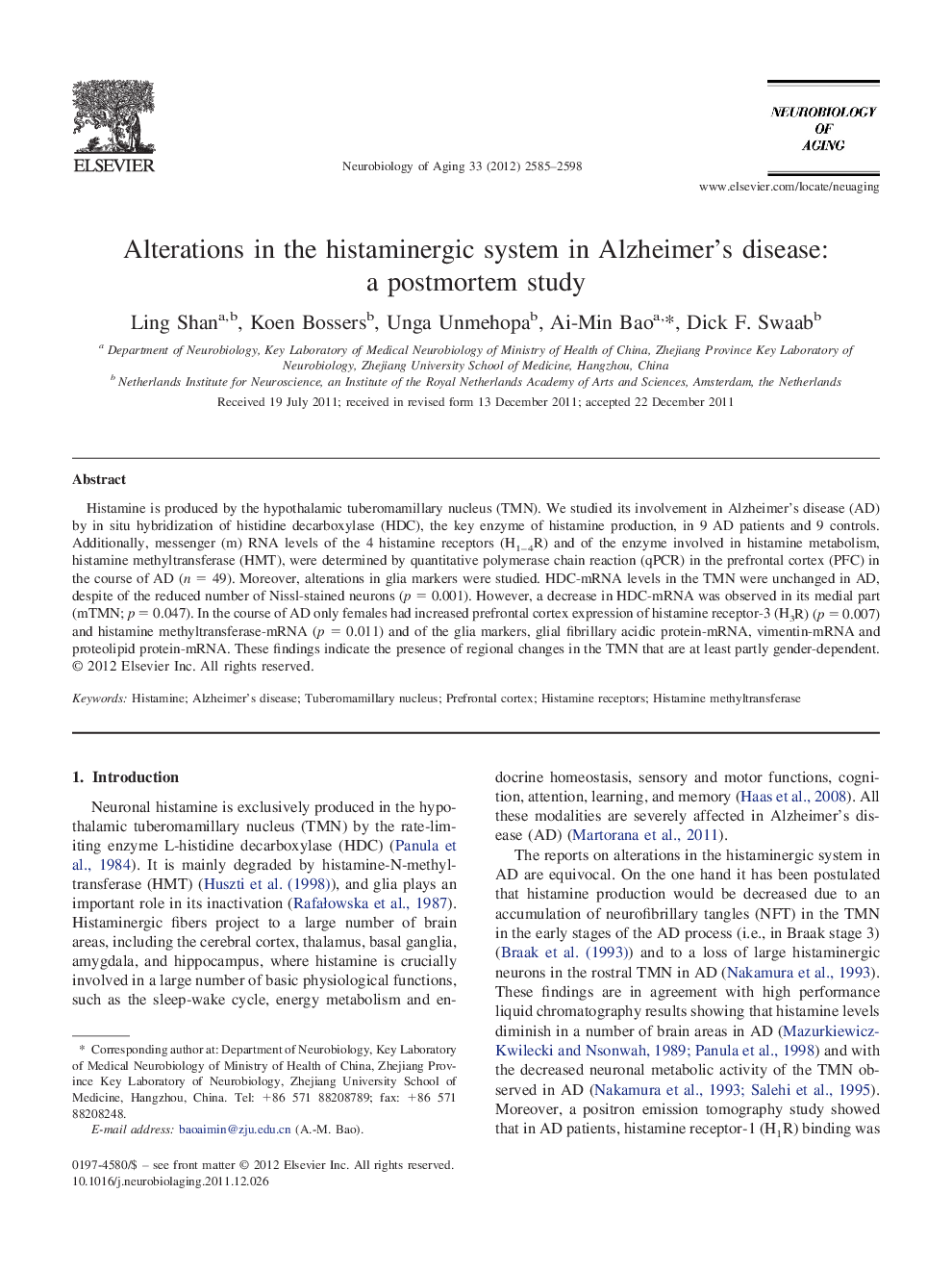| Article ID | Journal | Published Year | Pages | File Type |
|---|---|---|---|---|
| 6808011 | Neurobiology of Aging | 2012 | 14 Pages |
Abstract
Histamine is produced by the hypothalamic tuberomamillary nucleus (TMN). We studied its involvement in Alzheimer's disease (AD) by in situ hybridization of histidine decarboxylase (HDC), the key enzyme of histamine production, in 9 AD patients and 9 controls. Additionally, messenger (m) RNA levels of the 4 histamine receptors (H1-4R) and of the enzyme involved in histamine metabolism, histamine methyltransferase (HMT), were determined by quantitative polymerase chain reaction (qPCR) in the prefrontal cortex (PFC) in the course of AD (n = 49). Moreover, alterations in glia markers were studied. HDC-mRNA levels in the TMN were unchanged in AD, despite of the reduced number of Nissl-stained neurons (p = 0.001). However, a decrease in HDC-mRNA was observed in its medial part (mTMN; p = 0.047). In the course of AD only females had increased prefrontal cortex expression of histamine receptor-3 (H3R) (p = 0.007) and histamine methyltransferase-mRNA (p = 0.011) and of the glia markers, glial fibrillary acidic protein-mRNA, vimentin-mRNA and proteolipid protein-mRNA. These findings indicate the presence of regional changes in the TMN that are at least partly gender-dependent.
Related Topics
Life Sciences
Biochemistry, Genetics and Molecular Biology
Ageing
Authors
Ling Shan, Koen Bossers, Unga Unmehopa, Ai-Min Bao, Dick F. Swaab,
